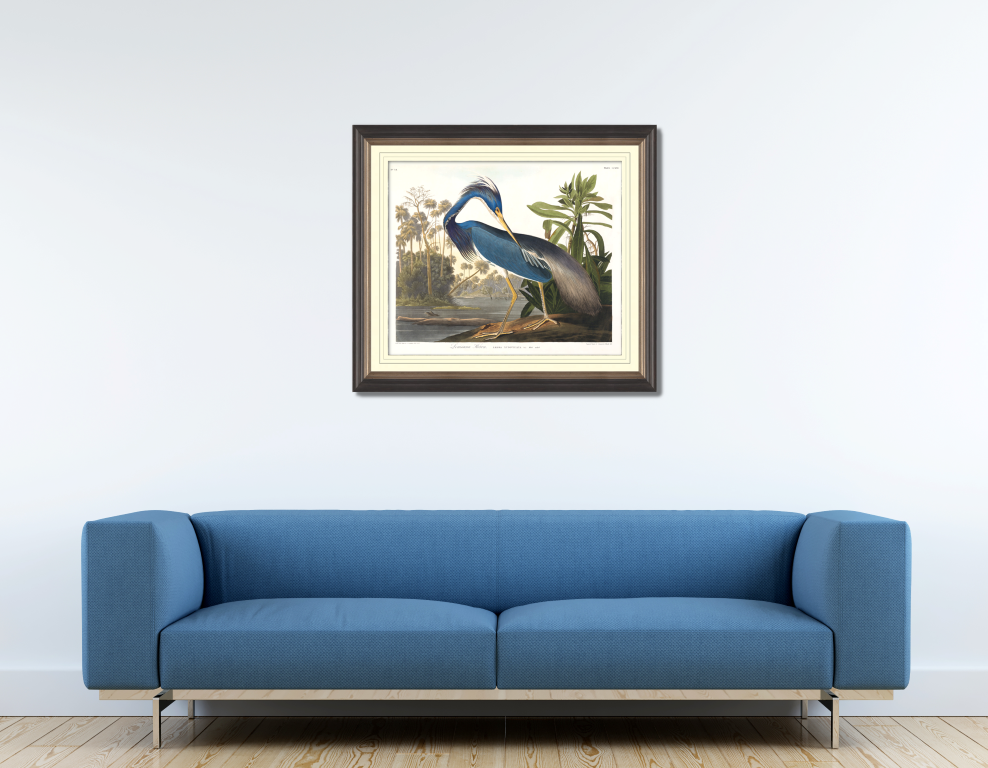Discover our exclusive collection
Over 3,000 historic giclee prints, 16 artists and 40 complete sets
Any questions?
We are more than happy to help. Just send us a message, and we will be in touch
Whenever I see Audubon’s paintings I am impressed by the vibrancy, the use of colour and the way he managed to capture these large birds on the paper. His herons actually seem to be alive, and I would like to share with you some of my observation.
Audubon always wanted to depict his birds life-sized. This was no problem for the smaller birds, but with this large bird, the paper size was a major limitation for him that he had to find a solution for.
The largest paper size available to Audubon was the so-called Double Elephant Folio. This paper was approximately 96 x 66 cm (38 x 26 inches) and was clearly not large enough. Audubon solved this by depicting the larger birds, such as the heron, with the neck angled.
For example, he portrayed The Great Blue Heron with wings that are slightly spread, and the head bent downwards towards the water.
Another feature that Audubon considered important was to depict the birds in their natural environment. He would observe the birds he wanted to draw for hours, days and sometimes even years in their natural habitat. Herons live by water and eat frogs and fish, as you can see this in the Night Heron image.
Audubon recorded all his observations in a diary. He knew that herons made their nests in trees, where they also hatched the eggs, and he depicted the Yellow Crowned Heron in the branches of a tree. You will note that when the male and female birds had markedly different plumage, he included both in his drawing.
In addition, Audubon used something called ‘motion composition’ which uses rotation and S-shaped lines to create dynamic images and represent movement.
These diagonal and S-shaped lines are hidden everywhere – in the background, in the branches, in the reeds and the grass, in the horizon and in the birds themselves. The heron with its long legs, body and beak is a perfect example of the way he combines these techniques.
Research into his working method has revealed that he often started his work in graphite. This is called an underpainting and he then applied the watercolours in several thin layers on the paper. He also used other materials and his technical skills increased enormously over the years. He used oil paint, gouache, chalk, ink and sometimes even made use of collage technique. In this example of the White Heron, he used pastel to express the fine and fluffy character of the beautiful plumage.
Audubon’s mission was to paint all the birds of North America and his series of herons are an integral part of this immense undertaking.
He was a talented artist and far ahead of his time. Instead of drawing the birds flat, from the side, as most ornithologists did, he turned his images into beautiful works of art.
His water-colour paintings are a feast for the eyes and never get boring. His drawings of the heron are truly beautiful and are a real asset to any interior. It is our mission to let fellow art lovers from around the world share in the joy of owning beautiful artwork.

If you have any questions, please contact us.
Over 3,000 historic giclee prints, 16 artists and 40 complete sets
We are more than happy to help. Just send us a message, and we will be in touch
Chambre of Commerce: 75 23 82 84
VAT: NL860202604B01
To subscribe to our newsletter and be updated about new and interesting additions to our collection, please enter your email address below.

© Heritage Prints 1992-2022 | All rights reserved